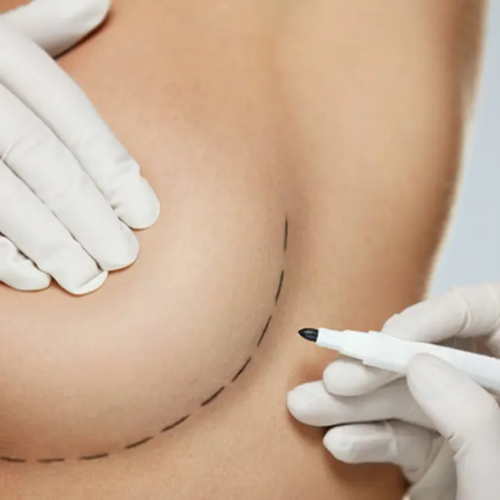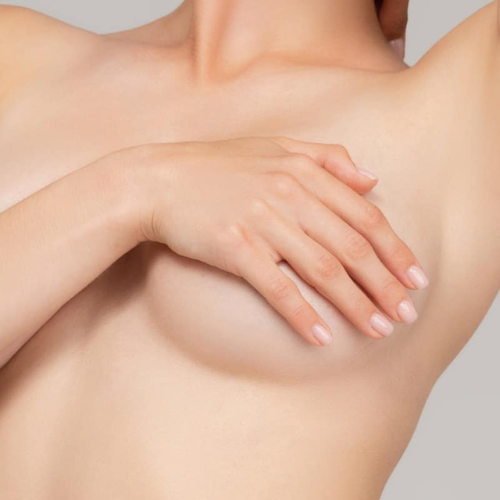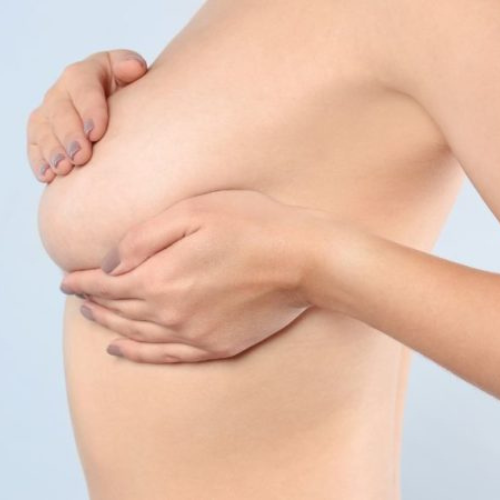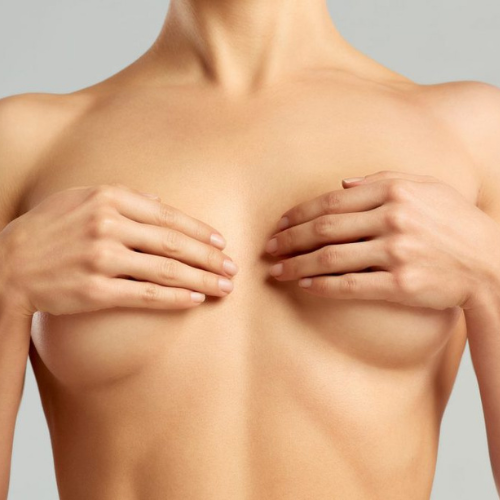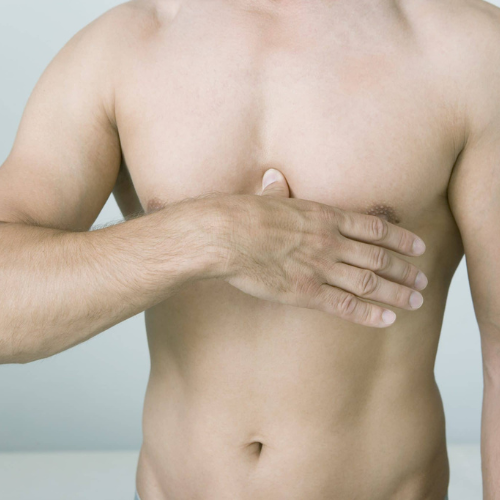Poitrine
De nombreuses raisons peuvent amener une femme à consulter pour sa poitrine. Elle peut être trop grosse, source de maux de dos. Elle peut être trop petite, à l’origine de complexes qui peuvent être mal vécus. La poitrine peut tomber ou être « vidée » suite à des grossesses, des variations de poids, l’effet des années. Certaines patientes présentent aussi des asymétries importantes ou des développements incomplets de leurs seins. Enfin, la chirurgie peut se concentrer uniquement sur les mamelons pour le traitement des mamelons invaginés.
Chaque problème a sa solution. Le choix du traitement dépendra de nombreux éléments. Il peut combiner plusieurs des techniques suivantes. L’objectif principal sera toujours de vous faire vous sentir mieux et de répondre à vos attentes, avec un résultat naturel, en privilégiant la solution la plus simple possible.
L’hypotrophie mammaire désigne une condition où les seins ont un développement insuffisant, ce qui se traduit par une taille ou une forme réduite par rapport à ce qui est considéré comme normal ou attendu pour l’âge et le sexe de la personne. Cela peut se manifester par des seins de petite taille, peu développés ou présentant une asymétrie significative entre les deux seins.
Les causes de l’hypotrophie mammaire peuvent être variées et peuvent inclure des facteurs génétiques, des variations hormonales, des troubles du développement mammaire, des anomalies congénitales, des problèmes de nutrition ou des conditions médicales sous-jacentes.
Les femmes atteintes d’hypotrophie mammaire peuvent être préoccupées par l’apparence esthétique de leurs seins, en particulier si cela affecte leur estime de soi ou leur confiance en elles. Cependant, il est important de noter que l’hypotrophie mammaire en elle-même n’est généralement pas associée à des problèmes de santé graves.
NOS SOLUTIONS POUR TRAITER L'HYPOTROPHIE MAMMAIRE
HYPERTROPHIE MAMMAIRE
L’hypertrophie mammaire est une condition où les seins présentent un développement excessif, se traduisant par une taille plus grande que la normale ou par des seins disproportionnés par rapport à la morphologie générale du corps. Cette condition peut affecter les femmes de tout âge et peut être source de préoccupations esthétiques, fonctionnelles ou psychologiques pour certaines personnes.
Les caractéristiques de l’hypertrophie mammaire peuvent varier considérablement d’une personne à l’autre, mais elles peuvent inclure :
- Volume excessif des seins : Les seins sont plus gros que la normale, ce qui peut entraîner un inconfort physique, des douleurs dorsales ou des problèmes de posture.
- Asymétrie mammaire : Les seins peuvent présenter une asymétrie significative, où un sein est plus grand que l’autre.
- Ptôse mammaire : Les seins peuvent être tombants ou avoir une position basse sur la poitrine en raison de leur taille excessive.
- Problèmes esthétiques : L’hypertrophie mammaire peut entraîner des difficultés pour trouver des vêtements qui s’adaptent confortablement et une insatisfaction esthétique avec l’apparence des seins.
NOS SOLUTIONS POUR TRAITER L'HYPERTROPHIE MAMMAIRE
Ptôse mammaire
La ptôse mammaire, également appelée « affaissement mammaire » ou « sein tombant », est une condition dans laquelle les seins perdent de leur fermeté et de leur position naturelle, ce qui entraîne une descente ou un affaissement des tissus mammaires. Cette condition est courante chez les femmes et peut être causée par plusieurs facteurs, notamment le vieillissement, la grossesse, l’allaitement, la perte de poids significative, ou simplement la gravité.
Les caractéristiques de la ptôse mammaire peuvent varier en fonction de la sévérité de la condition, mais elles peuvent inclure :
- Descendre des seins : Les seins peuvent sembler être tombés ou avoir perdu leur position haute et ferme d’origine.
- Affaissement des mamelons : Les mamelons peuvent pointer vers le bas plutôt que vers l’avant.
- Perte de volume : Les seins peuvent sembler moins pleins ou avoir perdu de leur volume, en particulier dans la partie supérieure des seins.
- Perte d’élasticité : La peau des seins peut perdre son élasticité naturelle, devenir plus lâche et présenter des plis ou des rides.
NOS SOLUTIONS POUR TRAITER LA PTÔSE MAMMAIRE
Mamelons ombiliqués
Les mamelons ombiliqués, également appelés mamelons invaginés ou mamelons rentrés, sont une condition dans laquelle les mamelons sont enfoncés à l’intérieur du sein plutôt que de pointer vers l’extérieur de manière habituelle. Cette condition peut être présente dès la naissance ou se développer plus tard dans la vie.
Les mamelons ombiliqués peuvent varier en gravité, allant d’une légère indentation à une inversion plus prononcée. Ils peuvent affecter un ou les deux mamelons et peuvent être permanents ou temporaires, pouvant changer de forme en fonction de divers facteurs tels que la température, l’excitation ou la manipulation du sein.
Les mamelons ombiliqués peuvent être causés par plusieurs facteurs, notamment :
- Anatomie naturelle : Dans certains cas, les mamelons ombiliqués peuvent être simplement une caractéristique anatomique naturelle de la personne, sans qu’il y ait de problème médical sous-jacent.
- Tissu mammaire resserré : Un tissu mammaire resserré ou une connexion fibreuse entre les canaux lactifères et le tissu mammaire environnant peut tirer les mamelons vers l’intérieur.
- Infections ou inflammations : Certaines infections ou inflammations dans le sein peuvent provoquer une rétraction des mamelons.
- Changements hormonaux : Des changements hormonaux tels que ceux survenant pendant la grossesse ou l’allaitement peuvent temporairement modifier la forme des mamelons.
Bien que les mamelons ombiliqués ne soient généralement pas associés à des problèmes de santé graves, ils peuvent parfois causer des difficultés pour l’allaitement maternel ou créer des complexes esthétiques pour certaines personnes.
NOS SOLUTIONS POUR TRAITER LES MAMELONS OMBILIQUÉS
Asymétrie – Malformation des seins
La malformation des seins est un terme général utilisé pour décrire une variété de conditions anatomiques qui affectent la forme, la taille, la symétrie ou la fonction des seins. Ces malformations peuvent être présentes dès la naissance (congénitales) ou se développer plus tard dans la vie en raison de facteurs génétiques, de traumatismes, de changements hormonaux ou d’autres causes.
Il existe de nombreuses formes de malformation des seins, et chacune peut avoir ses propres caractéristiques et implications. Voici quelques exemples de malformations des seins courantes :
- Seins tubéreux : Les seins tubéreux sont une condition dans laquelle les seins ont une forme conique ou tubulaire, avec une base étroite et des mamelons souvent situés plus haut que la normale. Cette condition est due à un développement irrégulier des tissus mammaires pendant la puberté.
- Asymétrie mammaire : L’asymétrie mammaire se produit lorsque les deux seins ont une taille, une forme ou une position différente. Cette asymétrie peut être légère ou significative et peut être due à des variations naturelles dans le développement mammaire, des facteurs génétiques ou d’autres causes.
- Hypoplasie mammaire : L’hypoplasie mammaire se réfère à un développement insuffisant des tissus mammaires, ce qui se traduit par des seins de petite taille ou sous-développés. Cette condition peut être présente dès la naissance ou se développer pendant l’adolescence ou l’âge adulte.
- Polythélie : La polythélie est une condition dans laquelle une personne a des mamelons supplémentaires, souvent situés le long d’une ligne allant de l’aisselle au mamelon. Ces mamelons supplémentaires peuvent être petits et n’avoir pas de tissu mammaire développé.
- Syndrome de Poland : Le syndrome de Poland est une condition congénitale rare qui affecte le développement des muscles de la poitrine et peut entraîner une asymétrie mammaire, une hypoplasie mammaire ou l’absence de tissu mammaire.
Ces exemples ne représentent qu’une petite partie des malformations des seins possibles. Chaque cas de malformation mammaire est unique, et le traitement et la gestion dépendront de la nature spécifique de la condition, des besoins et des préférences de la personne concernée.
NOS SOLUTIONS POUR TRAITER LES ASYMÉTRIES - MALFORMATIONS DES SEINS
La gynécomastie est une condition caractérisée par le développement excessif du tissu mammaire chez les hommes. Elle peut se manifester par une augmentation de la taille des seins, une sensibilité mammaire et parfois même par la présence de mamelons en saillie. La gynécomastie peut affecter un ou les deux seins et peut être asymétrique.
Les causes de la gynécomastie peuvent être variées, et elles incluent souvent des déséquilibres hormonaux entre les hormones sexuelles masculines (androgènes) et féminines (œstrogènes). Les facteurs de risque courants de la gynécomastie comprennent :
- Puberté : Pendant la puberté, les fluctuations hormonales peuvent provoquer une gynécomastie temporaire chez de nombreux garçons. Cela se résout souvent spontanément avec le temps.
- Âge avancé : Avec l’âge, la production d’androgènes diminue, ce qui peut entraîner une augmentation relative des œstrogènes et une gynécomastie chez certains hommes plus âgés.
- Utilisation de médicaments : Certains médicaments, tels que certains antidépresseurs, antiandrogènes, stéroïdes anabolisants, médicaments contre l’hypertension artérielle et traitements hormonaux, peuvent augmenter le risque de développer une gynécomastie.
- Conditions médicales : Certaines conditions médicales, telles que l’insuffisance rénale, l’hyperthyroïdie, le cancer du testicule et certains troubles hépatiques, peuvent provoquer des déséquilibres hormonaux et contribuer à la gynécomastie.
- Facteurs liés au mode de vie : La consommation excessive d’alcool, l’utilisation de drogues récréatives telles que la marijuana et l’exposition à des substances chimiques environnementales peuvent également jouer un rôle dans le développement de la gynécomastie.

